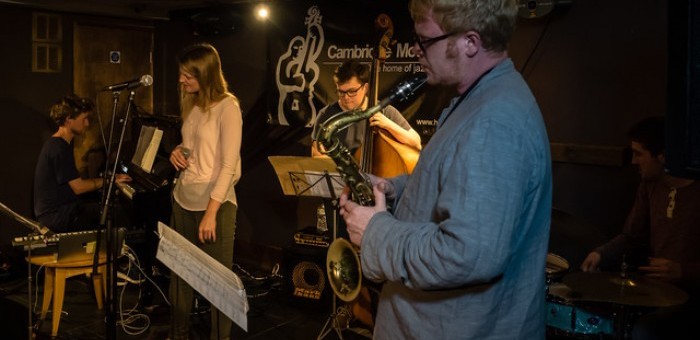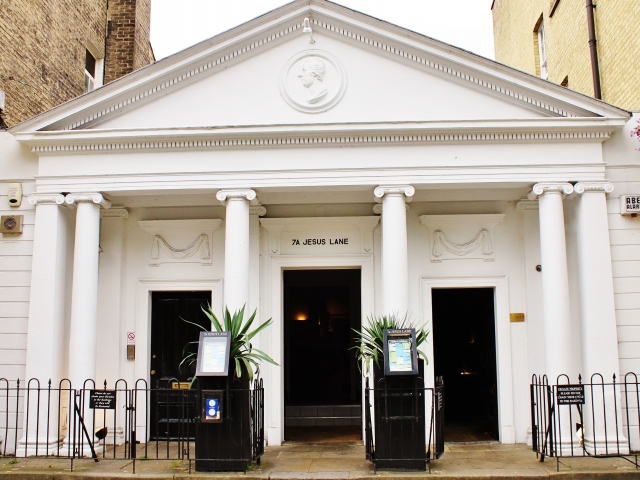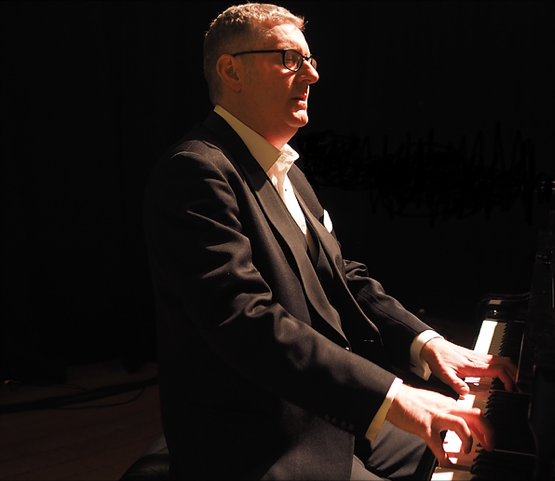Apr 2, 2024 12:59 PM
Saxophonist, Sonic Explorer Casey Benjamin Dies at 45
Casey Benjamin, the alto saxophonist, vocalist, keyboardist and producer who stamped his distinctive sounds on the…

Lauren Kinsella (second from left) performs at Cambridge Modern Jazz.
(Photo: @David Hone)The fabric of jazz has always relied on independent programmers. Whether restaurant, bar, club or concert hall owners, these innovative individuals should be credited for keeping jazz alive at a local level. Sometimes, they don’t even have a venue, and instead use agreements with clubs who give them the freedom to create their own musical sphere, blending their tastes to the environment. As a mostly student-populated town close to London, Cambridge is surprisingly devoid of major jazz clubs. But Cambridge Modern Jazz is an organization that fills that void.
CMJ was founded in 1972 and currently runs its operations from a lounge bar called Hidden Rooms in Jesus Lane, a dark and cosy cellar in an old Victorian Roman bath house. Ionic columns greet you grandly before you head downstairs to get your dose of jazz in a warm setting with fine cocktails.
Eclecticism is the motto of the house, a fact that programmers David Gower and John Blandford will be quick to point out, listing previous appearances by such artists as Greg Osby, Charlie Wood and Tim Garland. In June and July, I was able to catch three shows that demonstrate such variety.

Cambridge Modern Jazz runs its operations from a lounge bar called Hidden Rooms in Jesus Lane. (Photo: Courtesy CMJ)
Early on, vocalist Lauren Kinsella presented her very personal singing style, which evokes a blend of Norma Winstone and Annette Peacock, with a hint of Abbey Lincoln and Joni Mitchell. Her poetic lyrics blend with improvised passages whose lyrical quality is very distinctive. The dynamics tend to fall into the same floating and ethereal atmospheres that shy away from blues, swing or anything too greasy, but at least there’s a risk-taking attitude to the music that keeps it interesting, especially with Tom Challenger on tenor to beef up the band.
The double-saxophone quartet of Alex Hitchcock (tenor saxophone) and Tom Barford (tenor and soprano saxophones) started out with a Tristano-esque flavor on “Wow” and developed a music that always retained a melodic approach however angular it chose to be. The influence of Mark Turner and Joe Lovano was noticeable, though Hitchock had a broader tone and Barford played with a more compact sound. Despite a certain lack of warmth, they kept up a melodic approach and Barford presented two excellent compositions.
The best concert was undeniably pianist Chris Ingham’s vibrant and moving homage to Dudley Moore, the comic actor, pianist and violinist. Interspersed with comments and storytelling, the concert was a sprightly and spirited affair with lots of swing and 1960s jazz-bossa nova. The addition of Paul Higgs on trumpet gave another dimension to what was originally trio music, adding brisk colors and melodic sensitivity somewhere between Sweets Edison, Art Farmer and Kenny Dorham.

Chris Ingham (Photo: @Peter Davies)
Chris Ingham has a warm and generous way with music, his own blend of Oscar Peterson, George Shearing and Errol Garner with a dash of Monty Alexander. His style is based on rhythmic presence and dynamic propulsion, and his soloing, like Higgs’, was focused, enthusiastic and tasteful. Since the tunes have rarely ever been covered, it was quite refreshing to discover what felt like familiar and yet never-before-heard compositions, some with a touch of melancholy, others witty ditties with challenging harmonic twists. Their album Dudley displays the same genial spirit.
Cambridge Modern Jazz seems to have a lot more in store, with tenor Dave O’Higgins or vocalist Nicole Henry visiting next season, showing a continued élan devoted to keeping jazz alive in its many forms. DB

Benjamin possessed a fluid, round sound on the alto saxophone, and he was often most recognizable by the layers of electronic effects that he put onto the instrument.
Apr 2, 2024 12:59 PM
Casey Benjamin, the alto saxophonist, vocalist, keyboardist and producer who stamped his distinctive sounds on the…

“He’s constructing intelligent musical sentences that connect seamlessly, which is the most important part of linear playing,” Charles McPherson said of alto saxophonist Sonny Red.
Feb 27, 2024 1:40 PM
“I might not have felt this way 30 to 40 years ago, but I’ve reached a point where I can hear value in what people…

Albert “Tootie” Heath (1935–2024) followed in the tradition of drummer Kenny Clarke, his idol.
Apr 5, 2024 10:28 AM
Albert “Tootie” Heath, a drummer of impeccable taste and time who was the youngest of three jazz-legend brothers…

“Both of us are quite grounded in the craft, the tradition and the harmonic sense,” Rosenwinkel said of his experience playing with Allen. “Yet I felt we shared something mystical as well.”
Mar 12, 2024 11:42 AM
“There are a few musicians you hear where, as somebody once said, the molecules in the room change. Geri was one of…

Larry Goldings’ versatility keeps him in high demand as a leader, collaborator and sideman.
Feb 21, 2024 10:45 AM
Are you having any fun? Larry Goldings certainly is. Consider just two recent examples:
Scene 1: “If anyone had…